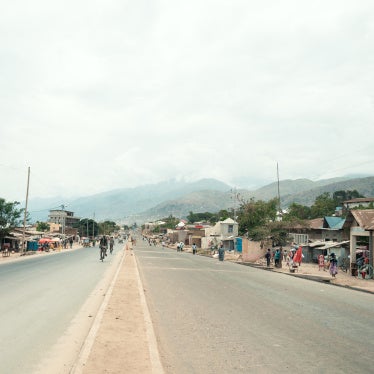Processing asylum claims at the US border is a Gordian knot in need of a clean cut. My scissors are ready. The solution is not procedural, but rather, a simpler, fairer asylum standard that will allow US decision-makers to quickly identify and protect people fleeing real threats.
Before the Trump administration set out to dismantle the asylum system, US policymakers spent two decades ineffectively trying to construct workable asylum procedures. Despite their efforts, an immigration court backlog that stood at about 186,000 at the beginning of President Obama’s term in 2009 grew to about 540,000 at the 2017 beginning of President Trump’s tenure. President Biden came into office with a backlog of over 1.29 million cases.
The last major immigration reform bill enacted was the 1996 Illegal Immigration Reform and Immigration Responsibility Act, which established “expedited removal” in US law with the promise of clearing cases from the immigration court dockets with new screening procedures. The result: increased inefficiency and unfairness.
A dizzying hodgepodge of “credible fear,” “well-founded fear,” “reasonable fear,” and “would be threatened” standards combined with procedures of convoluted complexity have made establishing an asylum claim nearly impossible.
And pity the poor asylum seeker without an immigration lawyer. A noncitizen trying to navigate complex removal proceedings does not have the same right as a criminal defendant to a court-appointed attorney, despite the potentially life and death consequences.
Things got much worse as the Trump administration worked to block access to asylum, create regulatory strangleholds on asylum procedures, and eliminate well-established grounds for providing protection, particularly for Central Americans fleeing gang violence and domestic abuse.
On February 2, President Biden signed an executive order that called for a report on expedited removal within 120 days with “recommendations for creating a more efficient and orderly process” and another report within 180 days to examine current asylum rules, regulations and guidelines.
One straightforward reform that would cut through the procedural morass is to learn from other countries and simply broaden the grounds for protection.
Nearly every country with individualized asylum systems — except the United States — applies three relatively simple protection standards in a single hearing or interview. First, they decide if the asylum seeker qualifies as a refugee under the “well-founded fear of being persecuted” standard of the 1951 Refugee Convention. If not, the decision-maker considers human rights protections under other international human rights conventions to see if there is a risk of torture or inhuman and degrading treatment or other serious threats to life and physical integrity upon return. Finally, the decision-maker considers the need for “complementary protection,” usually based on conditions of generalized violence or other extraordinary conditions that bring a real risk of serious harm.
In 2015, Germany appeared to be overwhelmed with an influx of about 890,000 asylum seekers. Applying a complementary protection standard along with the refugee and human rights convention standards, it eliminated its backlog by September 2017 and was keeping current with new applications.
Broadening the grounds for protection resulted in a quick and fair thumbs up or down. About 725,000 asylum seekers from Eritrea, Iran, Iraq and Syria had approval rates of over 50 percent. Meanwhile, 99 percent of the more than 275,000 nationals from countries in the Western Balkans — where many of the gravest human rights abuses have declined — were rejected.
Mexico also applies complementary protection in its asylum law. In Mexico’s case, the problems mostly center on corrupt and sometimes brutal police and immigration officials who block access to the procedure. But for those who manage to enter and stay in the asylum system, the approval rates in 2019 stood at 86 percent for Salvadorans, 83 percent for Hondurans and 62 percent for Guatemalans, a clear recognition of the life-threatening situations nationals of those countries face.
What should a complementary protection standard for the United States look like?
The US system includes a backstop assessment of risk of torture, but not of inhuman and degrading treatment or other serious threats to life or physical integrity, a grave omission. A complementary protection standard would extend protection to certain people who don’t qualify under the Refugee Convention or the Convention Against Torture standards. Specifically, it would apply to people who would face the threat of cruel, inhuman or degrading treatment or punishment, or serious threats to life or physical integrity if returned to their countries because of a real risk of violence or exceptional situations.
Using this broader standard, US Citizenship and Immigration Services asylum officers would be able to grant deserving cases at the outset, obviating the need for pre-screening “credible fear” interviews and keeping many easily granted cases out of overloaded immigration courts. In a single interview or hearing, an asylum officer or immigration judge would first determine if the arriving applicant qualified for asylum according to the well-founded fear of persecution standard and, if not, would determine if the person faced the threat of cruel, inhuman or degrading treatment or a serious threat to life or physical integrity from violence or exceptional situations.
The US currently has something that looks a bit like complementary protection, called temporary protected status (TPS), but it’s not the same thing.
While TPS provides protection based on armed conflict or an extraordinary situation that makes return unsafe, it is not applied during an individualized status determination but rather on a blanket basis for nationals from a designated country who were already in the United States. TPS excludes newly arriving asylum seekers.
Applying a complementary protection standard would enable adjudicators to grant asylum to people fleeing violence without requiring exhaustive examination of whether the perpetrators had persecutory intent. It would go a long way both to reducing the immigration court backlog and keeping current with new applications, while also recognizing the protection needs of many of those fleeing Central America.
There are, of course, additional reforms needed, most important among them eliminating expedited removal, ending arbitrary detention, and establishing the right of indigent asylum seekers to court-appointed counsel. But changing the standard would have the immediate effect of bringing both efficiency and fairness into a system that until now has lacked both.








